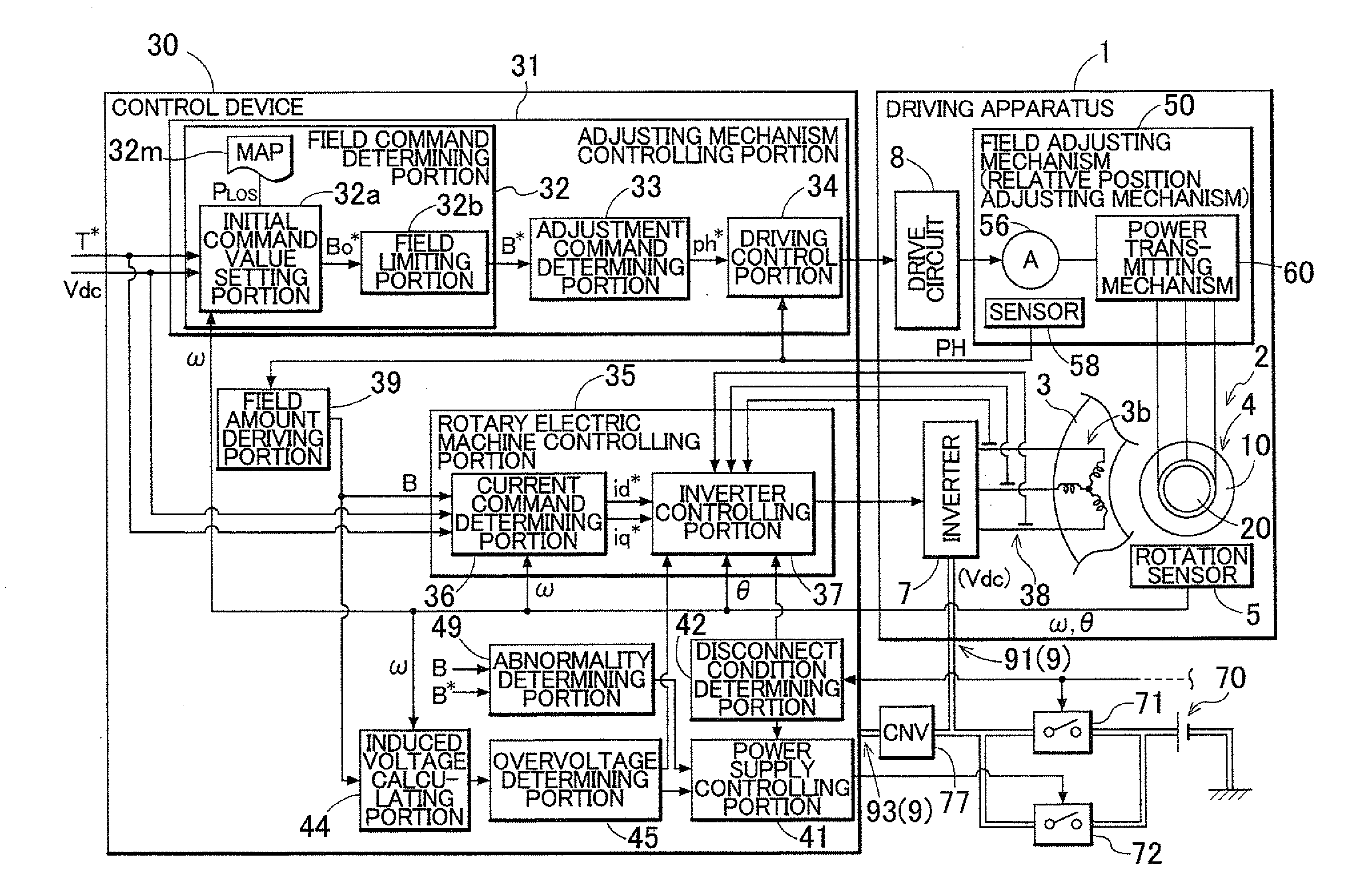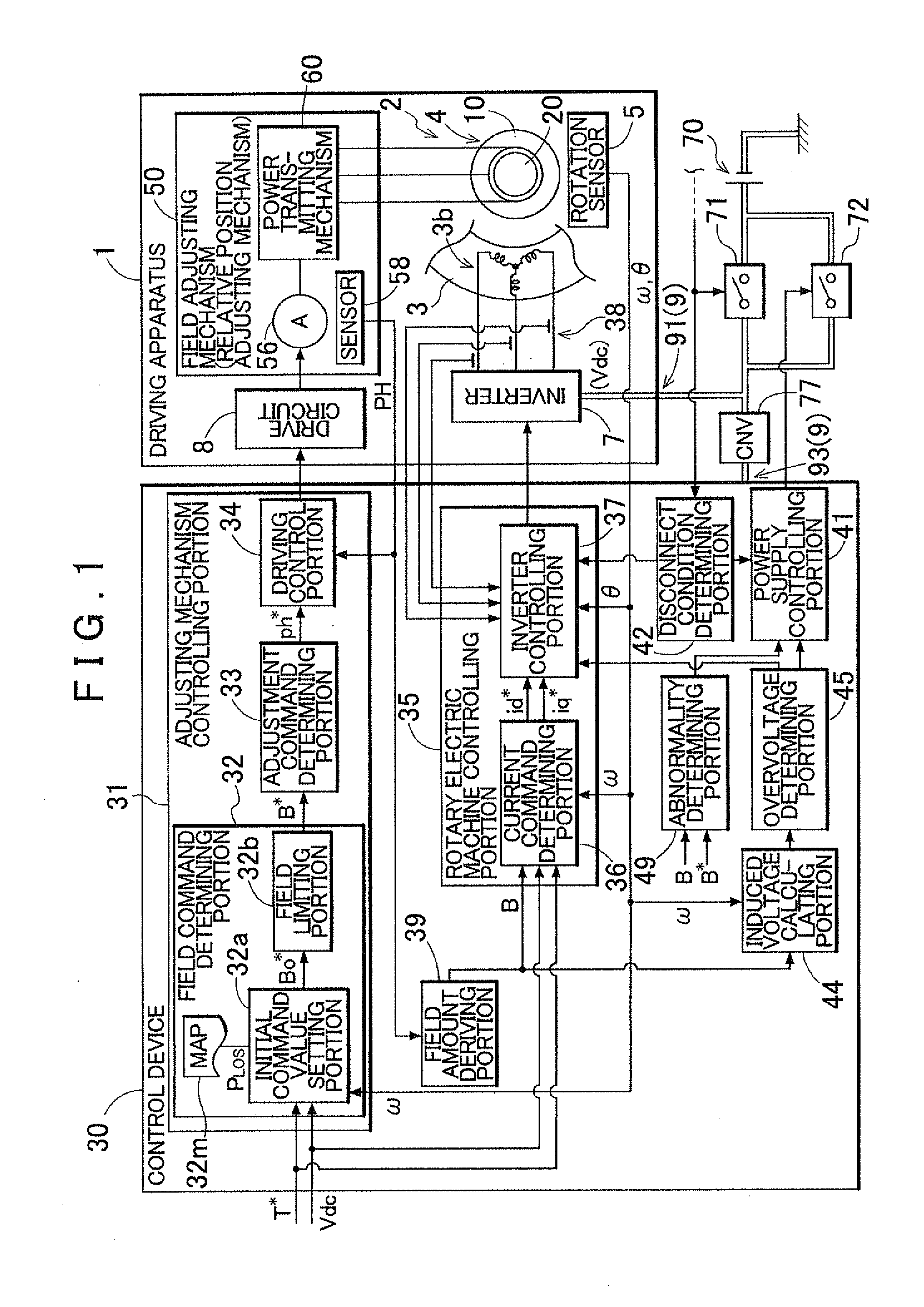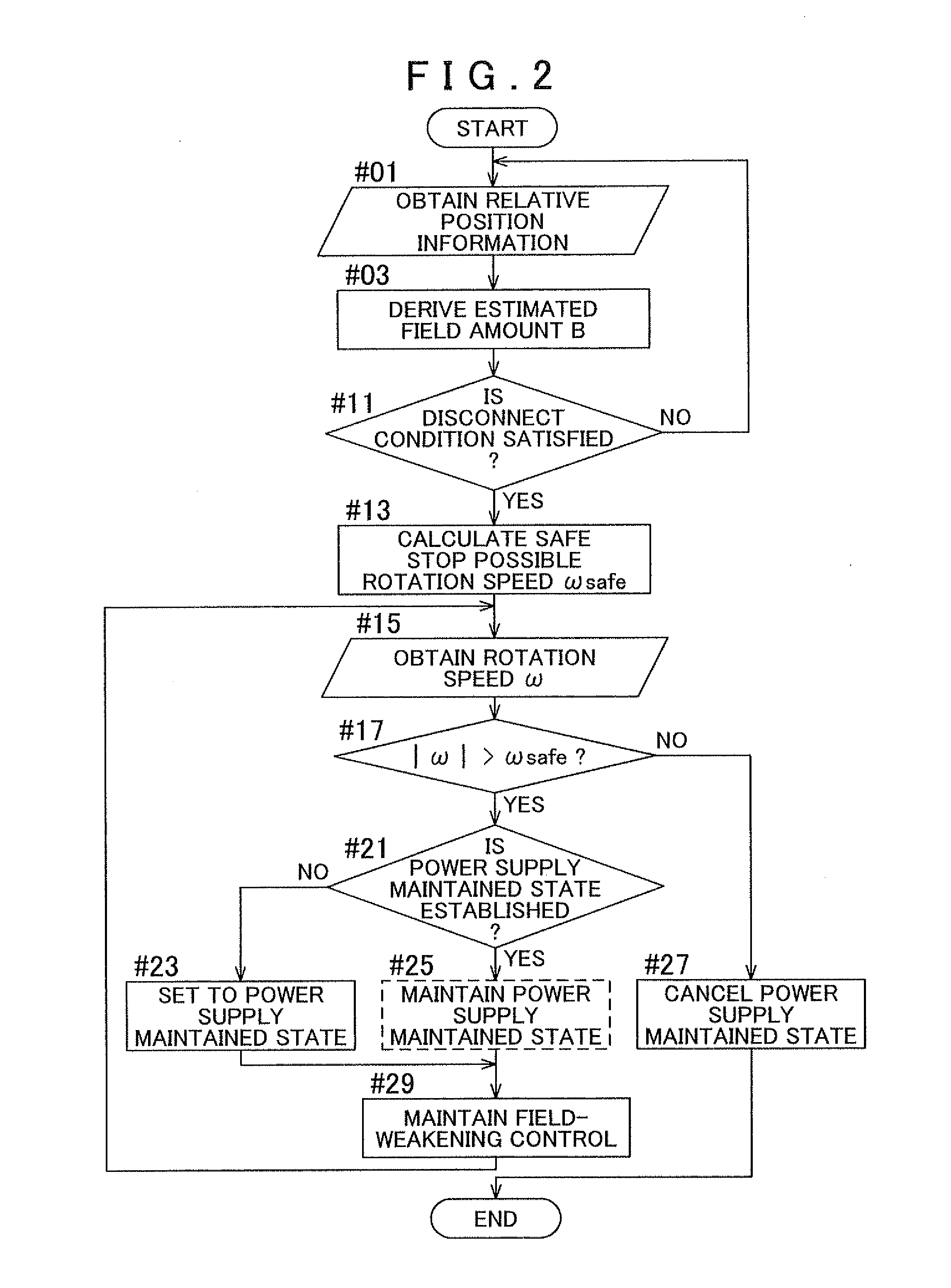[0007]Thus, the present invention provides technology capable of keeping induced voltage within a voltage resistance limit of an inverter, without increasing the size of a control device that controls a driving apparatus that includes a variable
magnetic flux-type rotary electric
machine.
[0009]According to the first aspect, if it is determined that the overvoltage state exists when the disconnect condition is satisfied, connection with the main power supply is maintained regardless of the disconnect condition, at least until the overvoltage state is eliminated. The connection with the main power supply is maintained, so the control device is able to control the rotary electric
machine by field-weakening control that supplies a weakened field current that weakens the field flux to the coil. Therefore, even if an unexpected event occurs, e.g., if a condition that the connection with the main power supply be disconnected is satisfied, during high speed operation with a
strong field flux, it is possible to inhibit high induced voltage from being generated by the rotor that continues to rotate from
inertia. When the
inertia force weakens and the rotation speed of the rotor decreases, the induced voltage also decreases. After the overvoltage state has been eliminated, the main power supply is disconnected according to the disconnect condition, so the main power supply can also be appropriately controlled. In this way, according to the first aspect, it is possible to keep the induced voltage within the voltage resistance limit of the inverter, without increasing the size of a control device of a driving apparatus that controls a driving apparatus provided with a variable
magnetic field-type rotary electric
machine.
[0012]According to a third aspect of the present invention, the rotary electric machine controlling portion of the control device of a driving apparatus according to the present invention may determine a current command that is a target value for a
driving current supplied to the coil, based on at least the estimated field amount, a target torque of the rotary electric machine, and the rotation speed, and control the rotary electric machine. When the field flux is constant, the current command is typically determined based on the target torque and the rotation speed. However, the current command for outputting the target torque differs depending on the strength of the field flux, so it is preferably determined taking the strength of the field flux into account. According to the third aspect, the current command is determined based on the estimated field amount, the target torque, and the rotation speed. Therefore, a driving apparatus in which the field flux is not constant can be controlled better following the changing field flux.
[0013]Also, according to a fourth aspect of the present invention, the field adjusting mechanism of the control device of a driving apparatus according to the present invention may be a mechanism that adjusts the field flux by displacing at least a portion of the rotor in a circumferential direction or a direction of a
rotational axis of the rotor, and may include a driving source that supplies driving force for the displacement, and a power transmitting mechanism that transmits the driving force from the driving source to the rotor. According to the fourth aspect, the field flux is adjusted by displacing at least a portion of the rotor, so the field flux can be adjusted without intermittently flowing weakened field current that reduces efficiency and the like.
[0014]Here, according to a fifth aspect of the present invention, the rotor may include a first rotor and a second rotor that each have a rotor core and of which a relative position is adjustable, and the permanent
magnet may be provided in the rotor core of at least one of the rotors. Also, the field adjusting mechanism may be a relative position adjusting mechanism that adjusts the field flux by displacing the relative position in a circumferential direction. The circumferential direction of the rotor is the direction corresponding to an electrical angle, so the relative position (the
relative phase) of the electrical angle of the two rotors can be changed by displacing the relative position of the two rotors in the circumferential direction. As a result, the
magnetic circuit through which the magnetic flux of the permanent magnet passes changes, so the field flux supplied to the
stator can be better adjusted.
 Login to View More
Login to View More  Login to View More
Login to View More 


